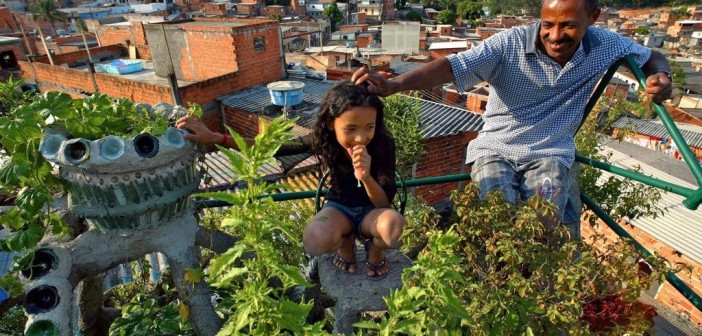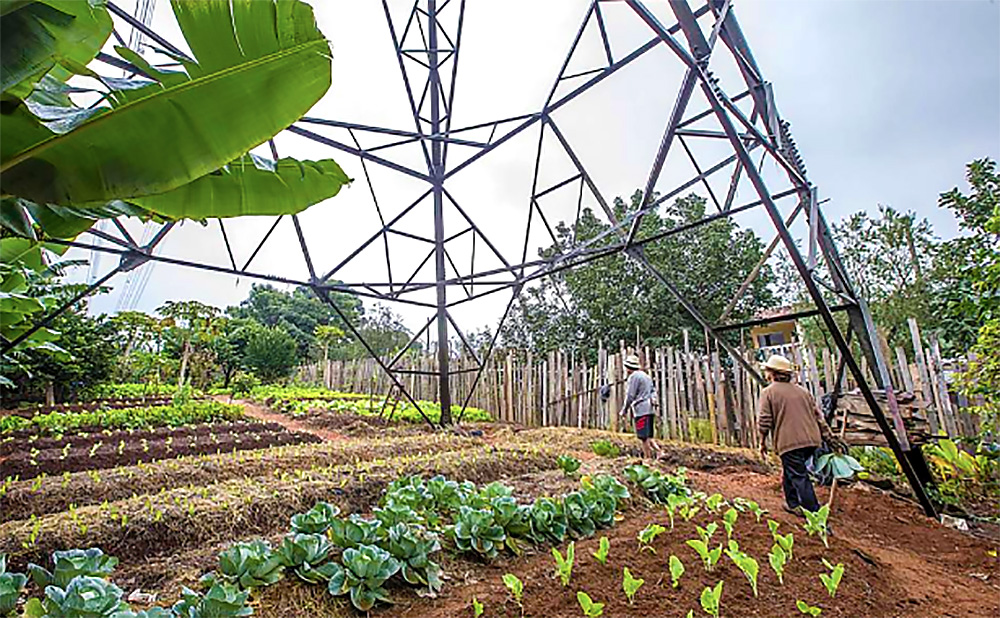São Paulo is a megalopolis with around 19 million inhabitants. Unsurprisingly, the city struggles to cope with the urban mobility issues caused by 7 million cars and poor public transport infrastructure. The real estate speculation made the city grow astronomically fast, without the necessary diligence towards urban planning; there are only a few parks and the lack of contact with nature and green areas is very apparent.
Very few have caught onto urban agriculture. Even with its many problems there are hardly any initiatives, a handful at best are dotted around the city. The difference is while in developed countries urban farming is somewhat seen as a luxury, as part of a fashionable “back to nature” trend, in emerging countries and places like Sao Paulo this trend is far more than that: it provides for basic needs such as nutrition while offering a well-needed revitalisation for the deprived urban areas.
An excellent example is José Aparecido Candido Vieira, 65 and ex-salesman. After spending most of his life working a 14-hour working day and retiring two years ago, he found himself with only his meagre retirement income. It’s at this point that Jose decided to become a urban farmer. Local NGO Cidades sem Fome (Cities Without Hunger) teams up with future urban farmers to obtain necessary legal protection to establish productive growing spaces in vacant or underused lots. With the help of Cidades sem Fome and of course his wife, Jose started his plantation on the unused land under the electricity pylons that cross his neighbourhood in the East side of Sao Paulo – one of the poorest areas in the city. As well as providing extra nutrition for his family, Jose makes around R$ 700 to R$ 1200 from the sale of his produce.
The main objective of this type of project is to revitalise the most deprived areas of the city and provide cheaper fresh produce to this part of the population. According to the NGO coordinator Hans Dieter Temp , “there is no shortage of derelict places waiting to be put to a good use: areas under the electricity transmission lines, land crossed by oil pipelines, vacant lots and abandoned public areas.
Another initiative happening in São Paulo is the Hortelões Comunitários group – the idea started as a Facebook group where urban farming enthusiasts would exchange tips about growing vegetables at home and/or in small spaces. Claudia Visoni and Tatiana Achcar were some of the people behind the initiative. The number of participants grew so quickly that the project went from social networking into the streets . The duo and a few group members joined forces and started their first community vegetable patch which at the time had only 800 square metres, inside Parque das Corujas. Now, the group has another 5 community gardens in the city.
However, setting up a community garden is not as simple as it seems. There is still no effective support or public policy in the country for this type of initiative even with its great potential. “There are estimates that 40% of food consumed in São Paulo, could be produced in São Paulo”, says Claudia Visoni.







